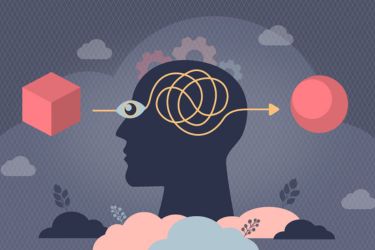Doom scrolling has become a common behaviour for many of us in today's digital age. As we endlessly scroll through negative headlines and distressing news on our devices, we may not realise the true impact this habit has on our brains. The persistent engagement with negative content can lead to serious emotional and mental health challenges, making it essential for us to recognise its dangers.

Research reveals that this compulsive behaviour is tied to how our brains respond to stress and anxiety. The constant barrage of troubling information can create a cycle that affects our mental well-being. As our mood deteriorates, we become more likely to seek out even more negative news, further harming our mental state and leading to physical consequences as well.
By understanding the effects of doom scrolling and recognising our habits, we can take steps to protect our mental health. Learning to create boundaries around our screen time will empower us to engage with the world positively.
Key Takeaways
- Doom scrolling negatively impacts our mental and emotional health.
- Awareness of our online consumption habits can help us make better choices.
- Implementing boundaries can reduce the harmful effects of excessive screen time.
The Psychology Behind Doom Scrolling

Doom scrolling taps into our brain’s wiring and can lead to significant mental health challenges. It often triggers our stress response, activating the amygdala, which processes fear and anxiety.
As we scroll through negative content, our cortisol levels can rise. This hormone is linked to stress and can lead to a feeling of being overwhelmed. The more we consume distressing news, the more anxious we might feel.
Our brains also exhibit a negativity bias. This means we are more likely to focus on negative information than positive. As a result, spending time on social media or news sites can amplify our worries and fears.
Doom scrolling can affect our decision-making. The prefrontal cortex, responsible for reasoning, might become less effective under constant stress, leading to cognitive impairment. This can create a cycle where we feel unable to think clearly and turn back to scrolling for relief.
Over time, our brains may become conditioned to seek out negative information. This is partly due to neuroplasticity, where neural pathways strengthen with repeated behaviour. Thus, we may develop an addiction to this habit.
The HPA axis, which regulates our stress response, can become dysregulated due to prolonged exposure to negative stimuli. This can make it even more challenging to break free from doom scrolling.
Recognising these effects is the first step toward managing our online habits.
Physical Effects of Excessive Screen Time

Excessive screen time can lead to serious physical effects that impact our daily lives. From disrupting our sleep to affecting our emotional regulation, we need to recognise the consequences of our digital habits.
Impact on Sleep
Our screen time, especially before bed, significantly impacts our sleep quality. The blue light emitted by devices interferes with melatonin production, making it harder to fall asleep. This can lead to sleep disruption, causing us to wake up frequently during the night.
A lack of sleep can increase our cortisol levels, the stress hormone. Higher cortisol levels can result in feelings of anxiety and irritability upon waking. Over time, chronic sleep disruption can contribute to cognitive decline, affecting our memory and focus during the day.
Cognitive Decline and Memory
Increased screen time can lead to cognitive decline, particularly in our memory abilities. Research suggests that prolonged exposure to screens contributes to reduced attention spans and impaired memory function.
As we scroll endlessly, the amygdala, a part of our brain responsible for processing emotions, becomes overstimulated. This overstimulation can lead to difficulties in retaining information and decreased cognitive abilities. Thus, it's vital to manage our screen time to protect our memory health.
Challenges to Emotional Regulation
We often experience heightened emotional reactions due to excessive screen time. Constant exposure to negative news or social media can amplify feelings of stress and anxiety. The involvement of our amygdala in these reactions can strain our emotional regulation further.
Additionally, this constant stress can lead to inflammation in our bodies, which has been linked to various mental health issues. By recognising the link between screen time and our emotional well-being, we can start taking steps to reduce our exposure and improve our mental health.
Behavioural Aspects of Doom Scrolling

Doom scrolling affects our behaviour in multiple ways, leading to a cycle of negativity. By understanding the feedback loop, the role of social media platforms, and the effects of addiction and FOMO, we can grasp why this habit is so hard to break.
Feedback Loop and Negativity Bias
Doom scrolling creates a feedback loop that reinforces negative emotions. As we continually consume negative news, our brain responds by triggering anxiety and stress. This reaction often leads us to seek more negative content, believing it will somehow alleviate our concerns or keep us informed.
Our negativity bias makes matters worse. This means we pay more attention to negative news than positive stories. Research shows that our brains are wired to focus on threats and dangers. This behaviour can further entrap us in a cycle of constant unease.
The Role of Social Media Platforms
Social media platforms play a significant role in our doom scrolling behaviour. They are designed to keep us engaged, often using algorithms that prioritise sensational and negative content.
Notifications about breaking news can draw us in, making it hard to resist clicking through. The endless scroll feature allows us to consume news without limit, which can evoke feelings of urgency and fear. This design leads us deeper into the cycle of negativity, impacting our mental health.
Addiction and FOMO
Doom scrolling can lead to an addiction that feeds on FOMO, or the fear of missing out. We feel pressured to stay updated with the latest alarming news, fearing we may miss crucial information.
This compulsion drives us to check our devices frequently, even when we are aware of its detrimental effects. The anxiety of not knowing what’s happening can feel overwhelming, causing us to engage more with negative content. Our minds become trapped, making it difficult to break free from this cycle.
Emotional Consequences of Negative Information

Consuming negative information can lead to severe emotional consequences, manifesting as heightened anxiety and stress. These responses can alter our mood and overall mental well-being.
Anxiety and Depression from Negative News
Regular exposure to negative news increases feelings of anxiety and depression. Studies show that when we engage with distressing content, our brains may produce more negative thoughts. This can create a cycle where anxiety leads to further consumption of bad news, intensifying our worried state.
Lower levels of serotonin, a key mood stabiliser, can also result from constant negative exposure. This correlation may make us feel hopeless and exacerbate depressive feelings. In a society filled with constant updates, it’s easy to see how this can spiral out of control, leading to significant emotional distress.
Stress and Emotional Responses
The brain triggers a stress response when we encounter negative information. This reaction releases cortisol, a hormone linked to stress, which can affect our mood and general well-being. High cortisol levels may lead to irritability and fatigue, creating a cycle where stress feeds on itself.
Additionally, we might experience heightened emotional responses, such as anger or sadness, from consuming alarming news. This shift can alter our interactions with others, leading to more significant emotional challenges over time. As we engage with negative information frequently, we risk becoming emotionally drained and overwhelmed.
The Social and Cultural Context
In our current environment, social and cultural factors significantly shape our habits around news consumption. The impacts of recent global events have heightened our emotional responses and altered our routines. Understanding these aspects can help us navigate the challenges of doom scrolling.
The Impact of the Covid-19 Pandemic
The Covid-19 pandemic has changed how we consume news. For many, accessing information about the virus became crucial. This increase in consumption often led to emotional reactions, such as fear and anxiety.
We constantly sought updates on infection rates and government responses. This need for information can create a cycle of doom scrolling. We may find ourselves checking news feeds multiple times a day, leading to heightened distress.
Our collective experience during the pandemic has shown how vulnerability can drive us to seek more information. Developing resilience in such times is vital, yet it can be hard when negative news dominates our screens.
The Role of Uncertainty and Conflict
Uncertainty can fuel our desire to stay informed. Conflicts, whether political or social, can lead us to engage with news content more frequently. We are driven by a need to understand the complexities of our changing world.
As we scroll through headlines, we may encounter distressing stories that trigger emotional reactions. This can lead to a state of constant unease.
In stressful times, it is natural for us to seek out information. However, we must recognise when this behaviour becomes harmful. Balancing our news consumption is crucial. Creating boundaries around our digital habits can help us manage the emotional toll of uncertainty and conflict.
Strategies for Mitigating Negative Impacts
To address the harmful effects of doom scrolling, we can adopt specific strategies that promote mental well-being. By integrating mindfulness practices, setting digital boundaries, and encouraging physical activity, we can create a healthier relationship with technology and improve our quality of life.
The Importance of Mindfulness Practices
Incorporating mindfulness practices into our daily routine is essential. Mindfulness helps us focus on the present moment, reducing anxiety and stress from negative news. Techniques such as meditation, deep breathing, and mindful observation can ground us.
We can start with just a few minutes each day. Apps like Headspace or Calm can guide our practice and keep us motivated. Regular mindfulness exercises not only improve mental resilience, but they also enhance our ability to cope with negative content. This can ultimately influence our overall well-being.
Setting Digital Boundaries
Setting digital boundaries is crucial in managing our consumption of online content. We can establish specific time limits for social media use. For example, limiting scrolling to 30 minutes a day can make a significant difference.
Using app settings or timers to remind us can help enforce these limits. We might also designate “no phone zones,” like during meals or before bedtime, which can help reduce the urge to scroll. Creating a schedule that includes technology-free periods allows us to disconnect and recharge, nurturing a healthier balance in our digital lives.
Promoting Physical Activity and Healthy Activities
Engaging in physical activity is vital for mental and physical health. Regular exercise releases endorphins, which combat feelings of stress and anxiety. We should aim for at least 150 minutes of moderate activity each week.
Activities like walking, cycling, or even dancing can serve as enjoyable alternatives to scrolling. Additionally, pursuing hobbies, reading, or spending time with loved ones can provide positive experiences that replace negative content consumption. Balancing our time with healthy activities can greatly enhance our well-being and improve our overall quality of life.
Seeking Professional Help and Building Resilience
It is crucial to address the impact of doom scrolling on our mental health. Seeking professional help and developing resilience can significantly improve our emotional regulation and overall well-being. These approaches empower us to manage psychological distress and trauma effectively.
The Role of Cognitive Behavioural Therapy
Cognitive Behavioural Therapy (CBT) is an effective tool for managing the effects of doom scrolling. It helps us identify and change negative thought patterns. CBT focuses on teaching practical strategies to cope with anxiety and stress related to overwhelming news and social media.
Through structured sessions, we learn to challenge irrational beliefs and replace them with healthier thoughts. This process enhances our emotional regulation and builds resilience. Therapists guide us in developing coping mechanisms that we can utilise outside of therapy, providing invaluable support in our journey toward better mental well-being.
Self-Preservation and Wellbeing
Prioritising self-preservation is vital for our mental health. We can achieve this by setting boundaries with our media consumption. Limiting our exposure to negative news is essential to protect our well-being.
Additionally, we can engage in self-care activities such as exercising, reading, or spending time with loved ones. These habits not only improve our mood but also bolster our resilience. Creating a healthy routine encourages emotional balance, allowing us to manage stress and anxiety more effectively.
Improving Mental Well-Being
Improving our mental well-being involves a multi-faceted approach. We should consider integrating mindfulness practices, such as meditation and deep breathing exercises, into our daily lives. These techniques help us stay present and reduce feelings of overwhelm.
Moreover, seeking social support can enhance our resilience. Talking with friends or professionals about our experiences can alleviate feelings of isolation. Understanding that we are not alone in our struggles is crucial for our recovery.
By focusing on these strategies, we can build a healthier relationship with media and strengthen our ability to cope with stress and anxiety.
Frequently Asked Questions
In this section, we will address common queries regarding the effects of doomscrolling on mental health. These questions focus on the psychological impacts, the relationship between negative news and anxiety, and effective strategies for managing our information consumption.
What are the psychological impacts of excessive negative news consumption on mental health?
Excessive exposure to negative news can lead to increased feelings of stress and hopelessness. This constant intake of alarming information can create a cycle of anxiety, making us feel more vulnerable and less in control of our lives.
How does constant exposure to negative news content contribute to anxiety or depression?
When we frequently consume distressing news, our brains may develop a heightened sense of fear. This may trigger feelings of anxiety and contribute to depressive symptoms, as constant negativity can wear down our mental resilience.
In what ways can persistent negative news browsing habits disrupt sleep patterns?
Engaging with negative news before bedtime can result in restless nights. Our minds may struggle to relax, making it difficult to fall asleep, which in turn can affect our mood and energy levels throughout the day.
What are the effective strategies to curb the habit of excessive negative news consumption?
To reduce doomscrolling, we can set specific times for checking the news and limit our exposure to certain sources. Finding alternative activities, such as reading or exercising, can also help redirect our focus away from negative content.
How does continuous engagement with negative online content compare with more mindful media consumption in terms of wellbeing?
Mindful media consumption encourages critical thinking and balance. In contrast to continuous engagement with negativity, it fosters a sense of control and promotes positive mental health, improving our overall sense of wellbeing.
Does frequent exposure to pessimistic news stories have a long-term effect on cognitive functions?
Regularly consuming negative news may hinder our ability to think clearly over time. It can affect memory and decision-making skills, leading to challenges in processing information due to increased stress and anxiety levels.





















